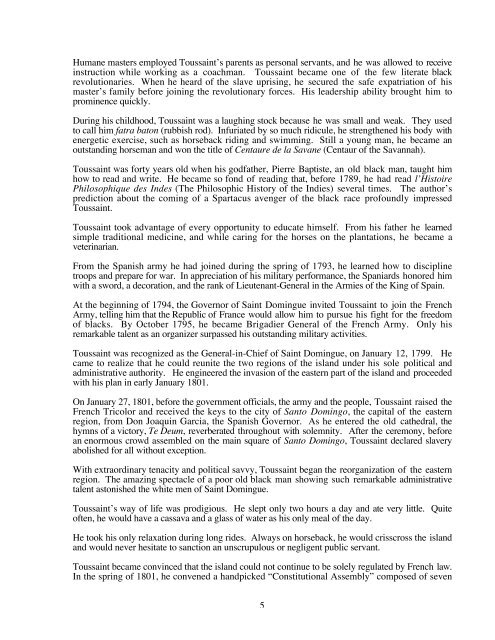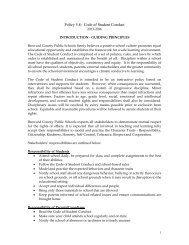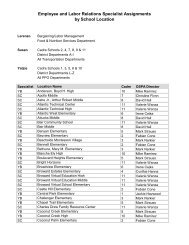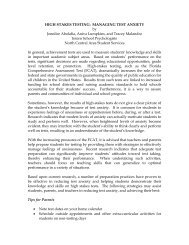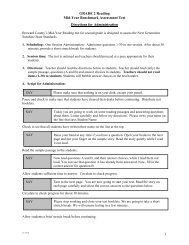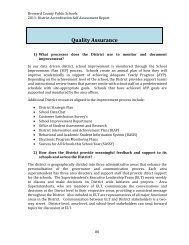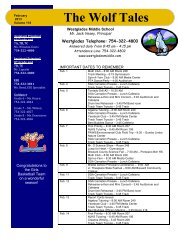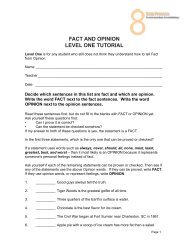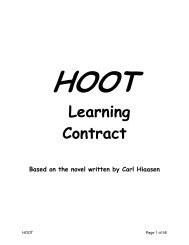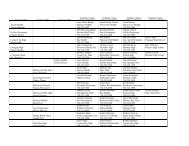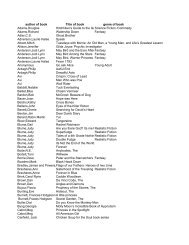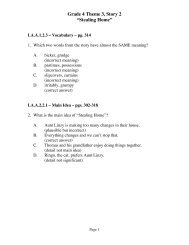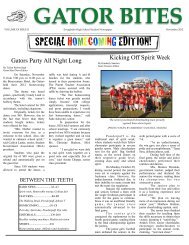Haitian Culture Curriculum Guide
Haitian Culture Curriculum Guide
Haitian Culture Curriculum Guide
You also want an ePaper? Increase the reach of your titles
YUMPU automatically turns print PDFs into web optimized ePapers that Google loves.
Humane masters employed Toussaint’s parents as personal servants, and he was allowed to receive<br />
instruction while working as a coachman. Toussaint became one of the few literate black<br />
revolutionaries. When he heard of the slave uprising, he secured the safe expatriation of his<br />
master’s family before joining the revolutionary forces. His leadership ability brought him to<br />
prominence quickly.<br />
During his childhood, Toussaint was a laughing stock because he was small and weak. They used<br />
to call him fatra baton (rubbish rod). Infuriated by so much ridicule, he strengthened his body with<br />
energetic exercise, such as horseback riding and swimming. Still a young man, he became an<br />
outstanding horseman and won the title of Centaure de la Savane (Centaur of the Savannah).<br />
Toussaint was forty years old when his godfather, Pierre Baptiste, an old black man, taught him<br />
how to read and write. He became so fond of reading that, before 1789, he had read l’Histoire<br />
Philosophique des Indes (The Philosophic History of the Indies) several times. The author’s<br />
prediction about the coming of a Spartacus avenger of the black race profoundly impressed<br />
Toussaint.<br />
Toussaint took advantage of every opportunity to educate himself. From his father he learned<br />
simple traditional medicine, and while caring for the horses on the plantations, he became a<br />
veterinarian.<br />
From the Spanish army he had joined during the spring of 1793, he learned how to discipline<br />
troops and prepare for war. In appreciation of his military performance, the Spaniards honored him<br />
with a sword, a decoration, and the rank of Lieutenant-General in the Armies of the King of Spain.<br />
At the beginning of 1794, the Governor of Saint Domingue invited Toussaint to join the French<br />
Army, telling him that the Republic of France would allow him to pursue his fight for the freedom<br />
of blacks. By October 1795, he became Brigadier General of the French Army. Only his<br />
remarkable talent as an organizer surpassed his outstanding military activities.<br />
Toussaint was recognized as the General-in-Chief of Saint Domingue, on January 12, 1799. He<br />
came to realize that he could reunite the two regions of the island under his sole political and<br />
administrative authority. He engineered the invasion of the eastern part of the island and proceeded<br />
with his plan in early January 1801.<br />
On January 27, 1801, before the government officials, the army and the people, Toussaint raised the<br />
French Tricolor and received the keys to the city of Santo Domingo, the capital of the eastern<br />
region, from Don Joaquin Garcia, the Spanish Governor. As he entered the old cathedral, the<br />
hymns of a victory, Te Deum, reverberated throughout with solemnity. After the ceremony, before<br />
an enormous crowd assembled on the main square of Santo Domingo, Toussaint declared slavery<br />
abolished for all without exception.<br />
With extraordinary tenacity and political savvy, Toussaint began the reorganization of the eastern<br />
region. The amazing spectacle of a poor old black man showing such remarkable administrative<br />
talent astonished the white men of Saint Domingue.<br />
Toussaint’s way of life was prodigious. He slept only two hours a day and ate very little. Quite<br />
often, he would have a cassava and a glass of water as his only meal of the day.<br />
He took his only relaxation during long rides. Always on horseback, he would crisscross the island<br />
and would never hesitate to sanction an unscrupulous or negligent public servant.<br />
Toussaint became convinced that the island could not continue to be solely regulated by French law.<br />
In the spring of 1801, he convened a handpicked “Constitutional Assembly” composed of seven<br />
5


